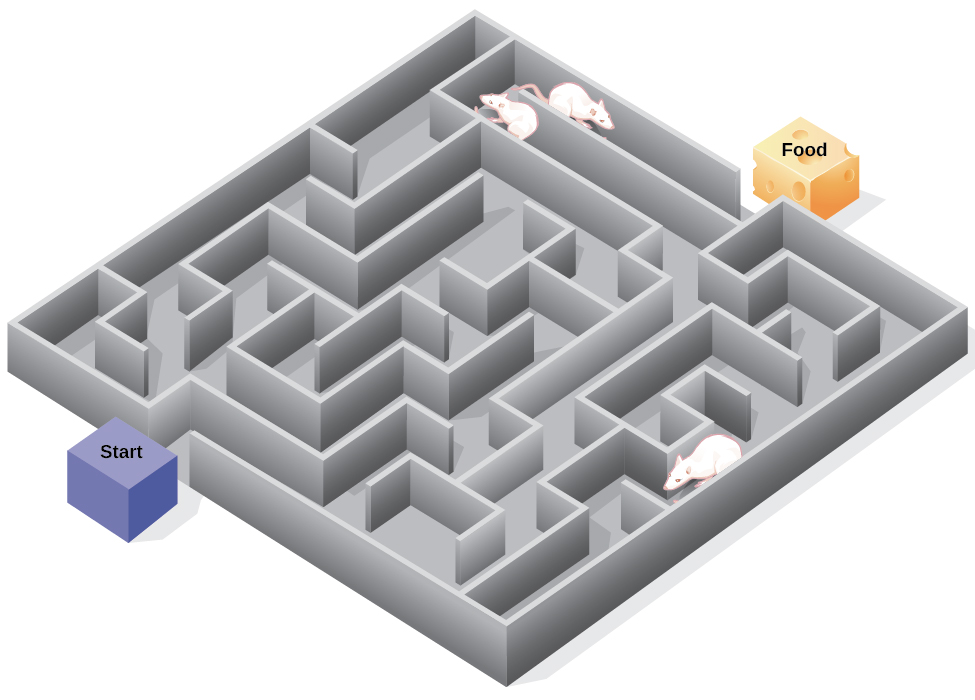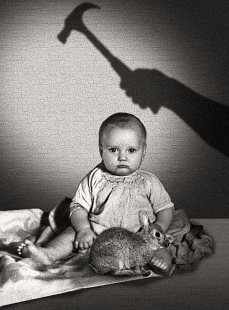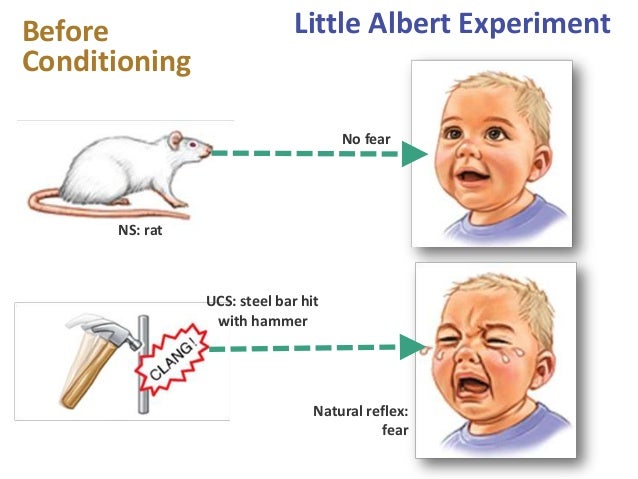Fill in the blank:
In the scientific method, after making an observation about the world, you then form a __________.
BONUS: Correlation does not equal ___________.
Hypothesis/Testable Hypothesis
Hypothesis: Testable prediction about what will happen.
B: Correlation does not equal causation.

What is a neuron?
BONUS: How do neurons communicate and what is the advantage of this type of communication?
A cell that transmits information through the nervous system.
B: Neurons communicate chemically, the advantage of this communication is neuroplasticity.
:max_bytes(150000):strip_icc()/g-neuron-56a792cd5f9b58b7d0ebd043.jpg)
Anything that harms a developing fetus.
BONUS: What is temperament?
Teratogen
EX: Stress, cigarettes, alcohol
- Remember timing and intensity is important to how harmful a teratogen is
B: Biological predisposition, infants initial behavioral characteristics
- Babies don't have a personality yet. We need self-awareness (red dot test) which allows for self-regulation and self-control.

What is learning?
BONUS: Learning through imitation of the behaviors of individuals whom one admires – What is the name of this term?

Relatively enduring changes in knowledge and/or behavior resulting from specific experiences.
- A piano falls on my head and now I know how to play the guitar -- is this learning? No.
B: Modeling (Observational Learning)
- Bobo Doll Experiment

What does the central nervous system consist of?
BONUS: What does the somatic nervous system do?
Brain: Command Center
Spinal Cord: Relays information to and from the brain
B: Conscious, voluntary actions, conveys sensory info to the brain
:max_bytes(150000):strip_icc()/brain_spinal_cord-57fe96b15f9b5805c26d5072.jpg)
What is the definition of psychology?
BONUS: Who founded it?

The scientific study of mental process (mind) and behavior.
B: William Wundt
Identify each lobe and explain what it does.
BONUS: What are the two non-colored structures at the bottom and what do they do?

Frontal Lobe (Blue): "Executive functions," organization, planning, decision making
Temporal Lobe (Green): Sound
Parietal Lobe (Yellow): Touch
Occipital Lobe (Pink): Vision
B: Brain Stem - Relays information from the peripheral system, communication from body to brain
Cerebellum: Coordination, balance, movement, posture
What are the 3 styles of attachment found in Mary Ainsworth's strange situation experiment?
BONUS: Explain one of the attachment types.

1. Secure: Upset when mom leaves, happy when she comes back (best)
2. Avoidant: Doesn't care when mom leaves, ignores mom when returns
3. Insecure-Ambivalent: Upset when mom leaves, when mom returns is angry, seeks and reject

Your professor gives you the specific dates she will have her four exams during the semester. What partial reinforcement schedule is this?
BONUS: A slot machine is an example of what kind of partial reinforcement schedule?
Fixed Interval
B: Variable Ratio
________________________________________
Fixed = Specific
Variable = Random, unpredictable
Ratio = Number of responses
Interval = Time

Give an example of a primary reinforcer and a secondary reinforcer.
Primary: Essential for survival or reproduction (food, water, sex, air, shelter)
Secondary: Reinforcer that has been associated through conditioning with one or more primary reinforcers (Money, status, reputation, degrees)

A descriptive research method used to obtain self-report data about people's experiences, attitudes, or feelings.
BONUS: What is a case study?
Survey
B: A descriptive research method where a researcher gathers detailed, qualitative, information about a single individual.

Inside the peripheral nervous system, what are the two divisions of the autonomic nervous system and what does each one do?
Sympathetic: Arouses body to prepare for action, 3 F's (Freeze, Flight, Fight), responds to threats, EX: Heart rate increases, lungs expand, digestion halts, causing your mouth to become dry
Parasympathetic: Returns body to resting-state after arousal (baseline), when we are not stressed
- Autonomic is non-conscious, regulates involuntary activities

Give an example of an authoritative parent and are they high or low in warmth and control?
B: What would be the opposite of an authoritative parent?
A parent who explains the reason behind their rules, holds a positive relationship with the child, and takes the child's feelings into account
B: Uninvolved/Neglectful
________________________________________
Authoritative = Clear rules, fair enforcement, a warm environment, and the use of reason rather than force - high warmth, high control
Permissive = Little way of setting boundaries, limits, or rules (Cool/Best Friend Parent) - high warmth, low control
Authoritarian = Strict rules, the expectation of obedience, severe punishment (Dictator/Drill Sergeant Parent) - low warmth, high control
Uninvolved/Neglectful = No affection or presence in life (Absent/Doesn't Care Parent) - low warmth, low control
:max_bytes(150000):strip_icc():format(webp)/1095045-article-types-of-parenting-styles-5a7cb6aaa18d9e00362ef5eb.png)
In the Little Albert experiment, they first showed Albert a white rat and he showed no innate response. In classical conditioning, what is this called?

Neutral Stimulus (NS)
- After pairing with the unconditioned stimulus (UCS), it becomes the conditioned stimulus (CS)

What is the basic anatomy of a neuron? What does each part do?
Dendrites: Receives info
Cell Body: Keeps us alive
Axon: Sends message
Terminal Buttons: Last part of the axon where neurotransmitters are released

In a correlational study, when a variable the researcher had not considered is responsible for observed effects in both of the variables of interest.
Third variable problem

What are the four structures of the limbic system and what does each do?
Thalamus: "Gate-way" to higher functions of the forebrain, relay station for information such as sensory signals for example
Hypothalamus: Basic drives (hunger, thirst, sleep)
Hippocampus: Memory
Amygdala: Emotions

1. What is a schema?
2. What is the assimilation and accommodation of a schema?
Schema: A mental structure/framework or cognitive model that represents some aspect of the world and how it works
Assimilation: Processing a new experience by fitting it into a preexisting schema
Accommodation: Altering a schema to incorporate new information or experiences

Whenever you go to the eye doctor, you get a little puff of air in your eye and it causes you to blink. Right before this puff of air, you hear a beeping noise. Now, every time you hear that beeping noise, you blink your eye.
In classical conditioning, what would be the unconditioned stimulus (UCS), neutral stimulus (NS), unconditioned response (UCR), conditioned stimulus (CS), and the conditioned response (CR)?
UCS: Puff of air
NS: Beeping noise
UCR: Blinking
CS: Beeping noise
CR: Blinking
________________________________________
UCS = Unlearned, naturally, and automatically triggers a response (Food)
NS = A stimulus that triggers no innate response, the subject has no relationship with at beginning of conditioning (Bell)
UCR = Unlearned response that occurs naturally in response to the unconditioned stimulus (Salivation)
CS = A neutral stimulus that, after being repeatedly presented prior to the unconditioned stimulus, evokes a similar response as the unconditioned stimulus (Bell)
CR = Acquired/conditioned response triggered by the CS, which used to be the NS (Salivation)
:max_bytes(150000):strip_icc()/2794859-article-classical-conditioning-5ac50cc9c5542e0037d54692.png)
A homeless man who hasn't eaten in a week goes into a restaurant. When no one is looking he takes a basket of bread and runs off.
In Kohlberg's Moral Development, what would be the moral judgment of this situation from a person in conventional morality?
BONUS: What are the other two types of personal morality and what would be their moral judgments about this situation?

"According to the law, it's illegal to steal and therefore what he did was wrong."
________________________________________
1. Preconventional - Based on the prospect of reward or punishment, blind obedience to authority (Parent told me that was wrong)
2. Conventional - Based on respect for the law, social norms, rules set by authorities (It's wrong because it's illegal)
3. Postconventional - Based on abstract principles and personal beliefs (It's wrong because it goes against my own personal ethics)

A psychologist wants to study if caffeine affects the cognition of students. One group of students consumes 100mg of caffeine and the other group of students drinks water. The psychologist then observes how well they do on a concentration test.
In the experimental method, what is the independent variable (IV), dependent variable (DV), experimental group (EG), and control group (CG)?
IV: Caffeine
DV: How well they do on the concentration test
EG: Group of students consuming caffeine
CG: Group of students drinking water
________________________________________
IV = What is being manipulated, what I change
DV = What is being measured, what I observe
EG = Group that receives IV, group the experimenter is messing with
CG = Group that doesn't receive the IV, comparison/baseline group
:max_bytes(150000):strip_icc()/control-and-experimental-group-differences-606113-FINAL1-5b7ad7d0c9e77c00574b71b5.png)
Where are the primary motor, somatosensory, visual, and auditory cortexes? What does each one do?

Primary Motor Cortex (G): Body movements (housed in the frontal lobe)
Primary Somatosensory Cortex (H): Differentiate one object from another by touch, determine the position of objects; pain, temperature, complex senses (housed in the parietal lobe)
Primary Visual Cortex (J): Where we actually see
Primary Auditory Cortex (I): Where we actually hear
What are the four stages of Jean Piaget's Theory of Cognitive Development and what develops in each stage?

1. Sensorimotor: Develops object permanence [Birth-2]
2. Preoperational: Becomes egocentric, also develops symbolic thought (language) [2-7]
3. Concrete Operational: Develops conservation [7-11]
4. Formal: Develops hypothetical thinking, abstract reasoning (Feather breaks glass) [11+]

Biff's parents are upset at him because he is making bad grades in psychology. They find out he hasn't been reading his textbook and they take away his beloved car and cell phone. In operant conditioning, how is Biff being conditioned?
B: Embarassing a student for getting the wrong answer.
Negative Punishment
Pleasant Stimilus = Car and cell phone
Behavior = Making bad grades
B: Positive Punishment
Aversive Stimulus = Embarassing
Behavior = Wrong Answer
________________________________________
Positive = Addition of stimulus
Negative = Removal of stimulus
Reinforcement = Goal to increase a behavior
Punishment = Goal to decrease a behavior

Every day Henry goes to class and his professor and peers criticize him for not reading his textbook. He starts reading his textbook and people stop criticizing him. In operant conditioning, how is Henry being conditioned?
B: Receiving a hug from your parents after throwing a temper tantrum.
1. Negative Reinforcement
Aversive stimulus = Criticism from peers and professor
Behavior = Reading textbook
B: Postive reinforcement
Pleasant stimulus = Hug
Behavior = Temper tantrum
- Negative reinforcement is not the same as punishment
- You are removing a stimulus (negative) to increase a behavior (reinforcement)
- EX: Putting your seatbelt on (behavior) to get rid of the annoying seatbelt alarm (aversive stimulus)
:max_bytes(150000):strip_icc()/what-is-negative-reinforcement-2795410-v1-5c12bd6146e0fb0001270b53.png)